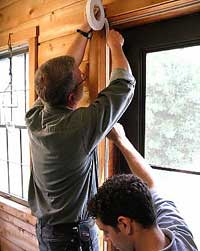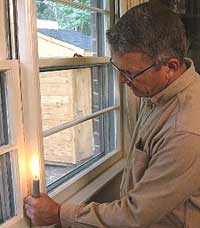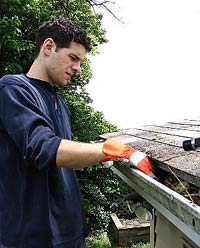Weatherproofing A Home
Whether you live in a winter rainfall or a dry winter region, weatherproofing your home is one of the easiest and most cost effective ways of insulating a home. With the proper insulation you can reduce monthly electricity costs, and create a warm, cosy home for the winter months, wet or dry.
The first step in weatherproofing your home is to inspect all those areas where cold air and moisture can gain access and cause problems. These areas are:
Doors
When inspecting doors look for light coming through. If light gets through, air and moisture will as well! A very inexpensive way to conserve energy in both the summer and winter months is to install a door sweep. A door sweep is fastened to the bottom of the door and is fitted with a metal and rubber flap that serves to close the gap found at the bottom of most exterior doors. Not only does it reduce airflow, it also serves as protection from water seeping into the home during heavy storms a must have in the winter rainfall regions.
Windows
For weatherproofing around draughty windows one can use manufactured rubber strips. These strips have a self-adhesive backing and are affixed around the inside of window frames to ensure that, when closed, windows have no gaps and are effectively airtight. To check for drafts, hold a lit candle close to the window seams. If the flame flickers it is a sure sign of draughty windows.
If drafts are coming through from the outside, check to see that caulking or putty is not damaged, and replace where necessary.
Gutters
Checking your gutters and downspouts should be an annual inspection, but even more important before the arrival of winter in those regions that experience rain during the winter season. Blocked and leaking gutters and downspouts can result in a build-up of water and can result in overflow and seepage into the building structure. Autumn is the ideal time to ensure that you gutters and downspouts are clear of debris.
Ceiling insulation
By adding insulation to your ceiling you will not only ensure a warm home during the winter months, but a cool home in the summer months as well. Ceiling insulation for a highly efficient thermal barrier and retains heat generated within a home during winter. It reduces heat loss by as much as 87%.
In the summer months, the sun beating down on the roof causes indoor temperatures to rise to uncomfortable levels. By adding ceiling insulation you can effectively reduce the heat flow between the outside and inside of your home, keeping it warmer in winter and cooler in summer.
Important: If you operate gas, natural or other heating appliances during the winter months a certain amount of airflow is essential.



